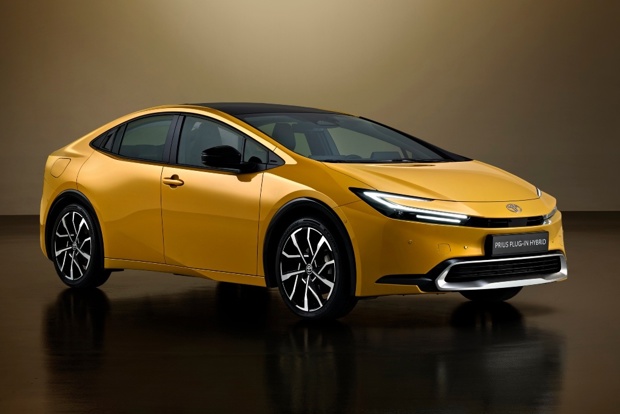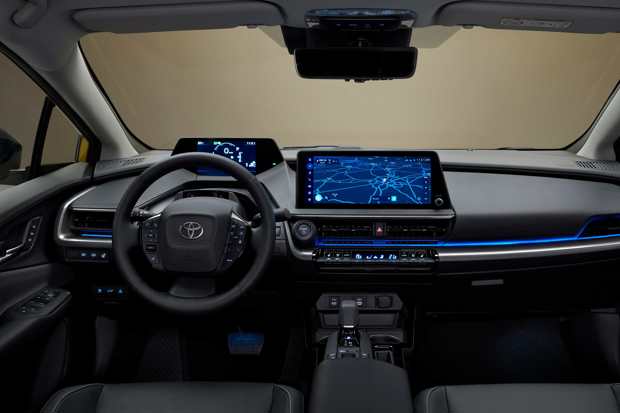Toyota Prius 2023: Prices, specs and release date

- New Toyota Prius is a radical redesign - but won't be sold in the UK
- 2023 Production will include hybrid or plug-in hybrid powertrains
The new Toyota Prius has made its global debut ahead of European deliveries beginning in 2023. The world’s original hybrid car has been completely redesigned for this fifth generation model, and will again be offered in both hybrid and plug-in hybrid guise.
Rivals are slowly catching up with Toyota. Alternatives to the new Toyota Prius include the Honda Civic, Kia Niro and Hyundai Ioniq – plus the Toyota Corolla – while the new Toyota Prius plug-in hybrid faces a whole host of competitors, including plug-in versions of the Audi A3 Sportback, BMW 1 Series and Mercedes-Benz A-Class.
| Find the best hybrid car deals on HonestJohn.co.uk |
Toyota Prius 2023 prices and release date
The new Toyota Prius is expected to be priced at a similar level to the current car. This indicates the regular Toyota Prius hybrid (or HEV for short) will cost from around £32,000, and the Toyota Prius plug-in hybrid (or PHEV) will cost from around £37,000.
However, the new Toyota Prius will not be sold in the UK. Toyota GB has elected not to take the fifth-generation model, citing meagre sales of the current model – only around 500 were sold in 2021, compared to almost 18,000 Toyota C-HRs. The British-built Toyota Corolla, exclusively offered in hybrid guise, also easily outsells the Prius.
The new Toyota Prius will be sold in Europe – but only in PHEV guise. It is expected to be released in spring 2023. Full prices will be confirmed nearer to launch.

Toyota Prius 2023 styling, interior and technology
The new Toyota Prius is a refreshingly modern and futuristic-looking car, in contrast to the rather oddball saloon car look of the outgoing model.
It returns to the sleek monospace design of the second- and third-generation models, but with newfound distinctiveness thanks to better-balanced proportions. It has a low and wide stance that looks far more appealing and desirable
As with previous models, the new Toyota Prius has a wind-cheating profile, with an aggressive rake to the windscreen and a gently curving roofline. It looks surprisingly sporty, particularly thanks to the ultra-slim LED lights at the front. Toyota says they resemble a hammerhead shark-style look. There are full-width LED combination lights at the rear, too.
The clean and minimalist lines are most striking at the side. There’s a simple crease that begins at the bottom of the front doors, moves rearwards through the back doors and joins up with the angled cut of the rear bumper. The sleek rear hatch now features bold Prius lettering.
| Find a used Toyota for sale |
Inside, the prominent centre touchscreen of previous Prius models remains the centrepiece of the new Toyota Prius interior. The screen is larger, measuring 12.3-inches, and there’s an additional head up-style colour display for the driver.
All new Toyota Prius will have a black interior colourscheme, brightened up by ambient lighting and contrast stitching for the upholstery. Toyota Safety Sense technology is also connected to the ambient lighting, in a brand first; it uses flashing lights to ‘pre-warn’ the driver, before any audible alerts.
Those buying or leasing the new Toyota Prius can choose from eight paint colours. There are two modern new solid shades, Ash and Mustard. All new Toyota Prius feature amply-sized 19-inch alloys.
The new Toyota Prius will come with a standard solar roof. This can power the air conditioning system when parked, and Toyota says it generates enough electricity to be the equivalent of driving more than 750 miles a year ‘for free’. A panoramic glass roof is also available.

Toyota Prius 2023 engines, performance and fuel economy
The new Toyota Prius is offered in both traditional HEV hybrid and PHEV plug-in hybrid guise. The regular Toyota HEV offers either a 1.8-litre or 2.0-litre ‘self-charging’ hybrid drivetrain. Both have more power, with the 2.0-litre version now producing 193PS – that’s an impressive 1.6 times more than the outgoing car.
The new Toyota Prius PHEV also uses a 2.0-litre engine, along with a plug-in battery. It produces up to 223PS, which will deliver impressive performance for such an efficient car: 0-62mph will take just 6.7 seconds. Both acceleration and quietness are “dramatically improved” from the previous model, stresses Toyota.
The key draw of the new Toyota Prius PHEV is its significantly improved EV driving range – which is up more than 50 per cent to almost 60 miles. This is thanks to a 13.6kWh battery, which is now mounted under the seats rather than below the boot floor, which will open up more luggage space. Fuel economy and CO2 figures will be revealed later.
| Toyota Prius deals |
The new Toyota Prius is based on the second-generation TNGA platform. This modern setup gives good levels of refinement and, with double wishbone suspension at the rear, a high level of driving sophistication. Toyota says it’s more responsive in corners and more settled when cruising. The new Toyota Prius PHEV features Toyota E-Four all-wheel drive, for better traction and more stability on slippery roads.
An interesting feature are built-in front- and rear-facing cameras. They are linked to the Toyota Safety Sense system, which stores recordings on the car’s ECU, rather than an SD card. This means plenty of capacity to store recordings.
The new Toyota Prius also features Advanced Park with remote function technology. This allows those buying or leasing a new Toyota Prius to automate parking and exiting from tight spaces via a dedicated smartphone app.
Where is the new 2023 Toyota Prius sold?
The Toyota Prius is a global car, so is sold in all major markets, including Japan, North America and Europe. However, for the first time, it is not to be sold in the UK.
How many Toyota Prius have been sold?
Toyota has sold more than five million Prius. The current tally is around 5.05 million Toyota Prius sold.
When was the original Toyota Prius launched?
The original Toyota Prius was launched in 1997. It was the world’s first mass-produced hybrid car
New Cars Coming Soon
Before you step into a showroom, read our in-depth guide to all the new cars coming in the next 12 months and beyond – some are well worth the wait.
Latest news
Are PHEVs expensive to run and maintain?

Can you recommend a petrol hybrid under £40,000 for towing?


